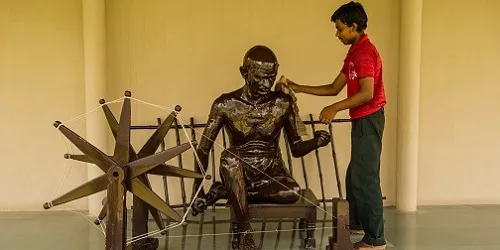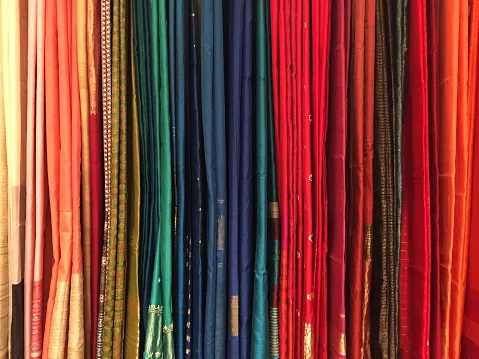From Gandhi to Modi, khadi has come a long way from being a weapon of non-violence
“If we have the 'khadi spirit' in us, we would surround ourselves with simplicity in every walk of life.” - Mahatma Gandhi
“We must promote the use of khadi. Buy at least one khadi article. If you buy Khadi, you light the lamp of prosperity in the house of a poor person.” - Narendra Modi
The second quote from the Prime Minister is from the very first Mann ki Baat radio address last October on Vijaya Dashami. The inclusion of a message about khadi in this landmark address is a sign of the continuing significance of khadi as a symbol of India’s spirit.

According to Micro, Small & Medium Enterprises (MSME) minister, Kalrak Mishra, this behest from the Prime Minister resulted in a spurt in the sale of khadi products. Mr. Modi’s government has since backed up his statements on the subject with concrete action - to make khadi more popular. The first visible step in this direction was the MSME-led initiative to make and sell khadi-denim clothing. The latest news in this regard is of the Khadi and Village Industries Commission (KVIC) roping in actor Amitabh Bachchan as ‘brand ambassador’ for khadi. Mr. Bachchan, reportedly, is not charging a fee for his services.
But why does khadi (or khaddar) which is coarse spun - cotton, wool, or silk - occupy such a central position in the Indian psyche?
The answer to this question, of course, starts with Mahatma Gandhi’s deployment of khadi and the charkha as weapons in his non-violent struggle against British colonialism. Gandhi positioned the handspun, hand-woven cloth as the antithesis of factory-made British goods, and thereby, a symbol of self-reliance and national pride for Indians. He called it “the livery of freedom.”
In the years following independence, leaders and politicians of every stripe co-opted this symbol to demonstrate their patriotism. The khadi Gandhi topi was a must-have accessory for every Congressman worth his salt, a couple of decades back. It was given a fresh lease of life recently when activist Anna Hazare and his supporters wore it during an anti-corruption movement in 2011. His protégé Arvind Kejriwal later made it part of the look for Aam Aadmi Party workers, which, ironically, caused fights to break out between AAP and Congress party workers during the Delhi Assembly elections in 2013. Not to be left behind, BJP workers started wearing saffron coloured Gandhi topis with the words ‘Modi for PM’ on them.
Less cynical, though, is the fashion industry’s enthusiastic adoption of khadi as a natural fibre, on par with the finest cotton and silk. Its unique qualities – it is 100% natural and environment (and skin) friendly; it is warm in winter and cool in summer; every piece of khadi is one of a kind and has its own distinctive texture and colour; it is relatively inexpensive – makes it an attractive option for designers looking to make stylish, minimalist clothing for the thinking client.

In fact, khadi designer wear is sometimes hardly recognizable as being made from the humble fabric. Designers use high-thread count khadi to make the fabric softer and easier to work with. The chic avatar of khadi was recently on display at a fashion show organized by the Gujarat State Khadi and Village Industries Board and the Fashion Design Council of India (FDCI), where top designers Rohit Bal, Anamika Khanna and Rajesh Pratap Singh showcased saris, lehengas, jumpsuits, dresses and capes made of khadi. Actress and fashion icon Sonam Kapoor wore the showstopper - a luxurious, white, embroidered lehenga with a black blouse, cape and shawl.
However, the khadi garment that wields the most influence today is far removed from the world of fashion - it is the Modi kurta. Everyone from the neighbourhood chachaji to the US President, Barack Obama, wants one. The short-sleeved, shirt-length kurta was reportedly much in demand even among youngsters this Eid.
One thing is for sure - khadi will continue to be relevant in the years to come, both as a symbol and as a fabric.







